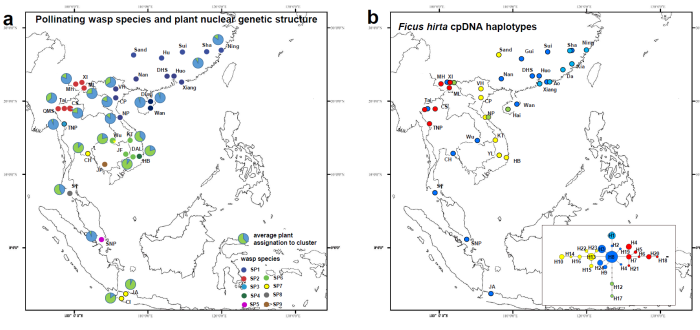

Previous studies generally believe that figs and fig wasps are co-evolutionary and co-speciation. However, the discovery of different species of pollinating fig wasps on the same host indicates that some fig wasps and their hosts did not evolve at the same time and co-speciation, and the situation should be more complicated: after the formation of geographically isolated small populations of fig and fig wasps, the genetic differentiation occurs. Because the generation time of fig wasps (one to several months) is much shorter than that of their host fig trees, speciation of fig wasps are faster, so new species of fig wasps have been formed, but fig trees have not formed new species or only new varieties. In addition, an exotic fig wasp settles on a new host fig tree, isolates and differentiates from the original population, and then form a new species, so that two species of fig wasps coexist in the latter host fig tree. New species of fig wasps can also be formed by infection with symbiotic bacteria (Wolbachia).
Based on this, Dr. YU Hui and her collaborators from SCBG have collected the widely distributed Ficus hirta and its pollinating wasps in Southeast Asia, determined species using DNA sequencing, then compared their distribution characteristics, phylogeography and genetic diversity. The results showed that the host Ficus hirta in Southeast Asia was the same species, while pollinating fig wasps were 9 species, 8 of which are sister species, produced by geographical isolation, and 1 is produced by host-shift. These species are mainly allopatric distributed. The results of this study are the most pollinating fig wasp species found in the same host fig tree so far, which will help us better understand the speciation and evolution mechanism of fig and fig wasp.
The results of this study were published in Molcular Ecology titled by “Multiple parapatric pollinators have radiated across a continental fig tree displaying clinal genetic variation” (https://doi.org/10.1111/mec.15046). The research was funded by the National Natural Science Foundation of China and the International Talent Program of the Chinese Academy of Sciences.

(a) The distributions of the pollinator fig wasp species associated with Ficus hirta. (b) The distributions of cpDNA haplotypes of Ficus hirta. Note the disjoint distribution of Sp7, the allopatric distribution of the closely related (according to COI data) Sp2 and Sp9 and the parapatric distribution of the closely related (according to COI data) Sp4, Sp6 and Sp7. For cpDNA, colours are used to show the localised distribution of haplotype H1 and of the different branches of the haplotype network.

